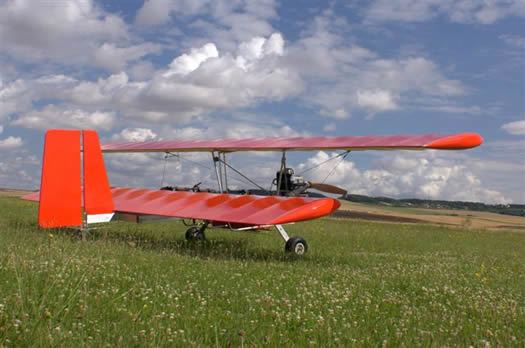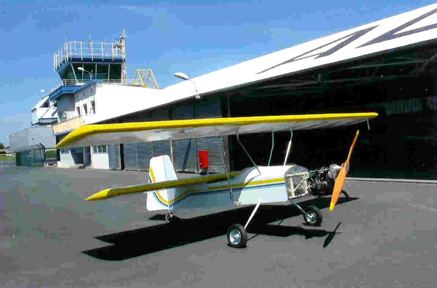Top speed 121 km/h Length 4.39 m | Wingspan 6 m Manufacturer APEV | |
 | ||
Similar Mignet Pou du Ciel , APEV Pouchel Light , APEV Pouchel II | ||
The Pouchel (also known as a "Ladder Flea") is a single-seat ultralight aircraft first flown in 1999, designed for amateur construction.
Contents

Design and development
The Pouchel I was conceived in 1997 by French engineer Daniel Dalby. The aim was to design an easy-to-build ultralight aircraft based on the formula, principles and writings of Henri Mignet. The core of the construction employed commercial aluminium ladders in the fuselage and as spars in both wings. The wings were assembled using styrofoam ribs, and were fabric-covered. It was powered by a Fuji engine, developing less than 15 hp. Controls were similar to Mignet Pou-du-Ciel designs, with a pivoting front wing and rudder, both operated by the control column via control rods and no foot pedals. After test hops and modifications, on 26 June 1999, Daniel Dalby piloted the Pouchel on its first true flight at Salon Eyguieres.

In 2002, after many plans had been sold to other amateur constructors, the ladder manufacturer refused to sell its products for this purpose, due to concerns about liability and insurance. The aircraft was then redesigned to replace the ladders with rectangular-section aluminium tubes (100 x 50 mm), becoming the Pouchel II, with a Rotax 447 engine and an empty weight of about 150 kg (331 lb). Subsequently, the Pouchel II was superseded by the APEV Pouchel Light, with an empty weight of about 100 kg (220 lb). A closely related aircraft in the same family is the APEV Demoichelle. Plans and kits are distributed by the APEV (Association pour la Promotion des Echelles Volantes, or in English, Association for the Promotion of Flying Ladders).
Variants

Specifications (Pouchel Light)
Data from APEV (2011)
General characteristics

Performance
